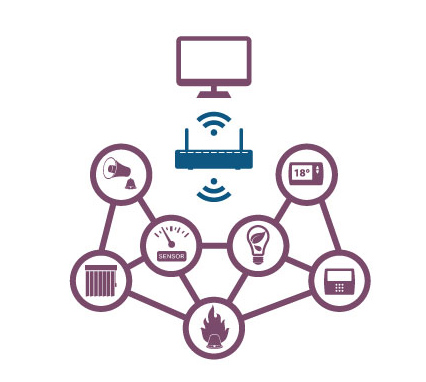Z-Wave Plus FAQ

Z-wave: An Introduction to Z-Wave Plus.
Z-WAVE TECHNOLOGY OVERVIEW
Z-Wave is low-power, 2-way wireless technology designed and optimized specifically for smart home applications and the Internet of Things. Z-Wave is the only smart home protocol dedicated to cross-brand product interoperability. Unlike competing protocols, every Z-Wave product always works with every other Z-Wave product, regardless of brand, and is backward-compatible between versions.
In addition to product interoperability, which is stringently certified, Z-Wave offers a myriad of advantages over other smart home protocols. Z-Wave’s intelligent, scalable, mesh network topology easily provides reliable coverage in virtually any home or building — Z-Wave devices are also repeaters. End-to-end S2 encryption makes Z-Wave smart homes virtually unhackable. Z-Wave’s industry-leading power management allows for sensors that can go for years without a battery change.
Please view our introduction video to see more reasons why Z-Wave has become the world’s most broadly-adopted smart home technology.
APPLICATION LEVEL INTEROPERABILITY
Z-Wave’s mandate of certified product interoperability at the application level is unique to the smart home industry and the IoT. Every Z-Wave product always works with every other Z-Wave device or application throughout the brand-agnostic Z-Wave ecosystem. No other smart home technology can make a similar claim toward cross-vendor interoperability. Z-Wave is the enabling technology of choice for more than 375 global market leaders in virtually every industry touched by the IoT, including over 90% of the North American smart security market.
BEST-OF-BREED SECURITY
Z-Wave’s S2 framework takes smart home network security to new levels of impenetrability, both for local devices and cloud-based applications. With S2, Z-Wave completely eliminates the vulnerability of the network during device inclusion. Attacks such as man-in-the-middle and brute force are rendered futile by way of PIN codes and an industry-standard secure key exchange. For customers building IoT cloud solutions and connecting Z-Wave to the other IP devices, the Z/IP Gateway routes all Z/IP traffic through a secure TLS 1.1 tunnel, thus eliminating cloud vulnerability.
SUPERIOR POWER MANAGEMENT
Z-Wave offers industry-leading energy management that allows battery-driven devices such as door/window sensors, door locks, water controls and motion sensors to operate for multiple years before needing battery replacement. Z-Wave devices can also operate in power-save mode, thus reducing power consumption further. The extremely low sleep current of Z-Wave’s latest modules effectively doubles battery life of over previous Z-Wave smart devices, which already led the market in energy efficiency, and opens exciting new possibilities for IoT sensors anywhere.
FREEDOM FROM JAMMING AND INTERFERENCE
Z-Wave devices operate in the 900 MHz band defined by the ITU G.9959 standard. This feature makes Z-Wave devices impervious to interference from overcrowded 2.4 GHz networks occcupied by Wi-Fi, Bluetooth, other common technologies. Interference, whether inadvertent or intentional, is dangerous for smart homes. Hackers even deliberately use 2.4 GHz signal jamming to cause false alarms and security breaches. Z-Wave’s two-way sensors feature Jamming Detect, a mechanism that was created to satisfy UL’s stringent interference protection requirements.
THE Z-WAVE MESH NETWORK
The Z-Wave distributed intelligence mesh-networking technology enables the Z-Wave devices themselves to create a network with built-in repeater technology and secure communications among all nodes, which is critical for door locks and other security-sensitive devices. While Z-Wave signals easily travel through most walls, floors and ceilings, the devices can also intelligently route themselves around obstacles to attain seamless, robust, whole-home coverage.
Z-Wave’s devices can communicate point-to-point for up to 120 feet on their own, but with their ability to hop signals, effective ranges of up to 600 feet are easily achieved, and Z-Wave networks can be linked together for even larger deployments.
Z-WAVE FOR IP
Sigma Designs’ Z/IP Gateway brings all Z-Wave devices to the Internet of Things. The Z/IP Gateway application handles communications between Z-Wave and Z-Wave for IP in the same way that a home router handles it between a home PC and the Internet. The Z/IP Gateway allows polling from multiple connected Z/IP clients, such as tablets, PCs and smart phones, and can connect to a remote server through a secure tunnel making it ideal for use with a portal server and cloud applications.

There are no products to list in this category.
